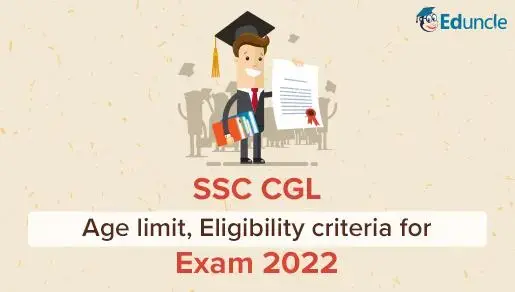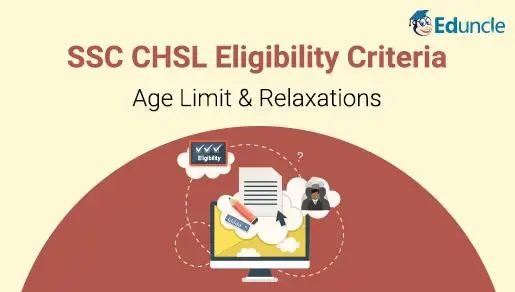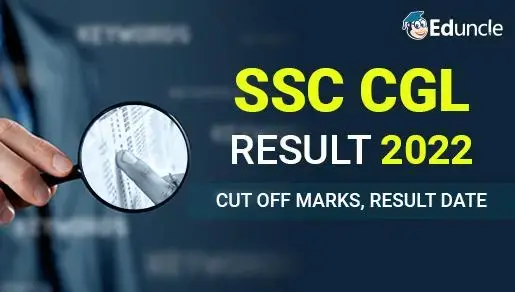Quantitative Aptitude Section in SSC CGL is considered the toughest one. The candidates need more accuracy and speed to attempt all the questions of this section.
As in the previous blog of SSC CGL Tier-1 30 Days Study Plan, we have discussed the time allocation strategy during the exam.
According to this strategy, the aspirants must solve 25 questions in 30 minutes only. You can’t spend more than 30 minutes on the Quantitative Aptitude Section as you’ll have to cover other sections as well.
In such a situation, when you have to solve a mathematics question in less than one-minute duration, you need to practice hard before appearing in the exam.
In this blog below, we will benefit you with the strategies and tips to attempt QA questions during exams. Also, we’ll share a list of SSC CGL Math formulas that will be beneficial in quick revision.
Strategies to attempt Quantitative Section in SSC CGL Tier-1 Exam
The Quantitative Aptitude Section can benefit you with a total of 50 marks if you attempt all the 25 questions correctly. And if you answer the questions incorrectly, you can lose 0.50 marks on each wrong answer.
So wisely analyze the question paper before you start attempting the questions.
First of all, understand the nature of all the questions, like- which question will take more time to solve and which will take less time.
After that, calculate your marks according to the less time taking questions.
If you can score well within short questions only, then take them first. And after solving them, if you have enough time left to solve lengthy questions, you can attempt those otherwise leave.
Don’t try to attempt the questions by using long methods. Quantitative Aptitude questions can be solved within short tricks and methods.
Maintain speed and accuracy while solving the questions.
Note: The Cut off marks for the Quantitative Aptitude Section will be decided based on the number of questions answered similarly by the aspirants.
SSC CGL Quantitative Aptitude Preparation Tips - Know how to make QA Section strong!
To conquer the Quantitative Aptitude Section with good marks, you need to develop great determination and confidence.
There’s nothing like reading and learning in Mathematics. The game is all about logical and mental abilities and the presence of mind to respond quickly while solving questions.
You need to understand the Math aptitude questions’ nature first and then solve them in minimal time duration with the smartest idea you can use.
The most basic four things in Mathematics are – Addition, Subtraction, Division, and Multiplication.
These calculations are very basic in mathematics used in most of the questions. So if you perform them faster, you can save valuable time in each question of SSC CGL Exam.
Remember multiplication tables up to 20. If you remember the tables, the calculations would be easier and faster.
Check the example here.
If you have to find out the result of 16*13, then you can simple solve this as –
16(10+3) = 16*10 + 16*3 = 160+48 = 208
And 13(10+6) = 130+78 = 208
So the answer of 16*13 is 208.
Learn the short tricks, solve quicker examples and clear your fundamentals to attempt more questions in the exam.
Solve SSC CGL Previous Years Question Papers and Sample Test Papers to assess your performance and make more improvements.
Now find out the reasons for your low performance and resolve them.
Revise with SSC Math quick notes containing formulas and short tricks.
Follow the above strategies to start your preparation for the Quantitative Aptitude Section in SSC CGL Tier-1.
“Success is the progressive realization of a worthy goal! – Earl Nightingale”
Download Free SSC CGL Study Plan & Boost your Learning
SSC CGL Tier-1 Short Tricks and Formulas – Learn as Quickly as Possible!
As per the SSC CGL Tier-1 Syllabus of Quantitative Aptitude, we have shortlisted the important topics that should be taken first while preparing for the QA section.
To reach your goal of SSC CGL qualification, you will have to prepare a perfect study plan and implement it as well.
You can check out the SSC CGL daily study plan for 1 month and follow it to boost your learning techniques.
Here in this section, we will benefit you with the quick revision methods and formulas.
Eduncle has come up with an SSC CGL Tier-1 Maths Short Tricks and Formulas PDF to ease your revision anxiety. Please check below:
Number System Quick Maths Formulas
1 + 2 + 3 + 4 + 5 + … + n = n (n + 1)/2
(12 + 22 + 32 + .... + n2) = n (n + 1) (2n + 1) / 6
(13 + 23 + 33 + .... + n3) = (n (n + 1)/ 2)2
Sum of first n odd numbers = n2
Sum of first n even numbers = n (n + 1)
(a + b) * (a - b) = (a2 - b2)
a + b)*2 = (a2 + b2 + 2ab)
a - b)*2 = (a2 + b2 - 2ab)
(a + b + c)*2 = a2 + b2 + c2 + 2(ab + bc + ca)
(a3 + b3) = (a + b) * (a2 - ab + b2)
(a3 - b3) = (a - b) * (a2 + ab + b2)
(a3 + b3 + c3 - 3abc) = (a + b + c) * (a2 + b2 + c2 - ab - bc - ac)
When a + b + c = 0, then a3 + b3 + c3 = 3abc
HCF and LCM Quick Maths Formulas
Product of two numbers a and b.
(a*b) = Their HCF * Their LCM.
But a*b*c ≠ HCF*LCM
HCF of two or more numbers is the most significant number, which divides them without any remainder.
LCM of two or more numbers is the smallest number divisible by all the given numbers.
HCF and LCM Factor
LCM of Fraction= (LCM of Numerator)/(HCF of Denominator)
HCF of Fraction = (HCF of Numerator)/(LCM of Denominator)
If d = HCF of a and b, then there exist unique integer m and n, such that d = am + bn.
Some important HCF and LCM Rules- Factors and Multiples
If number a is divided into another number b exactly, we say that a is a factor of b.
In this case, b is called a multiple of a.
Co-primes
Two numbers are said to be co-prime if their H.C.F. is 1.
HCF of a given number always divides its LCM.
Methods of finding HCF of two or more numbers
Method 1: Prime Factors Method
Break the given numbers into prime factors and then find the product of all the prime factors common to all the numbers. The product will be the required HCF.
Example
If you have to find the HCF of 42 and 70.
Then 42 = 2*3*7
And 72 = 2*5*7
Common factors are 2 and 7 so, HCF = 2*7 =14.
Free Download SSC CGL Sample Study Notes
Method 2: Division Method
Divide the greater number by the smaller number, divide the divisor by the remainder, divide the rest by the next remainder, and so on until no remainder is left. The last divisor is required HCF.
To check the complete procedure in example format, please visit the Number System Division and Remainder Rules.
Method 3: HCF of Large Numbers
Find the apparent common factor from both the numbers and remove it. Also, remove the prime number. Now perform the division method to the remaining numbers and find the HCF. Check out the example for a better understanding.
Methods of finding LCM of two or more numbers
Prime Factors Method
Resolve the given numbers into their Prime Factors and then find the product of the highest power of all the factors in the given numbers. The product will be the LCM.
Example
LCM of 8,12,15 and 21.
Now 8 = 2*2*2 = 23
12 = 2*2*3 = 22*3
15 = 3*5
21 = 3*7
So highest power factors occurred are – 23, 3, 5 and 7
LCM = 23*3*5*7 = 840.
Simplification Quick Maths Formulas
'BODMAS' Rule
Through this rule, you can understand the correct sequence in which the operations are to be executed and
This rule depicts the correct sequence in executing the operations and evaluating the series.
Here are some rules of simplification given below-
B – Bracket
(First of all, remove all the brackets strictly in the order (), {} and ||, and after removing the brackets, you can follow the below sequence)
O – Of
D - Division,
M - Multiplication,
A - Addition and
S - Subtraction
Modulus of a Real Number
Modulus of a real number a is defined as
|a| = a, if a > 0
= -a, if a< 0
Thus, |5| = 5 and |-5| = -(-5) = 5.
Vinculum (or Bar):
When an expression contains Vinculum, before applying the 'BODMAS' rule, we simplify the term under the Vinculum.
Square roots & Cube Roots Quick Maths Formulas
Duplex Combination Method for Squaring
In this method, either we calculate the square by multiplying the same digit twice or perform cross multiplication.
Here are the following Duplex rules and formulas, please check below.
a = D = (a*a)
ab = D = 2*(a*b)
abc = D = 2*(a*c)+(b)2
abcd = D = 2*(a*d) + 2*(b*c)
abcde = D = 2*(a*e) + 2*(b*d) + (c)2
abcdef = D = 2*(a*f)2 + 2*(b*e)2 + 2*(c*d)2
Now we'll make you understand the complete squaring procedure better with the help of examples. Check out the example here –
We have to find out the solution of (207)2 instantly.
Then,
(207)2 = D for 2 / D for 20 / D for 207 / D for 07 / D for 7
(207)2 = 2*2 / 2*(2*0) / 2*(2*7) + 02 / 2*(0*7) / 7*7
(207)2 = 4/0/28/0/49
(207)2 = 4/0/28/0/49
(207)2 = 4 / (0+2) / 8 / (0+4) / 9
(207)2 = 4 / 2 / 8 / 4 / 9
(207)2 = 42849.
Easy Method to calculate Cube
We want to explain the cube method by example only.
Find out the result of (16)3
Here we’ll write like this –
1 6 (6*6) (6*6*6) = 1 6 36 216
To find out the cube, it will be solved like this –
1 6 36 216
12 72
________________
4 0 9 6 = 4096
Problems on Ages Quick Maths Formulas
Formulas -
If the current age is x, then n times the age is nx.
If the current age is x, then age n years later/hence = x + n.
If the current age is x, then age n years ago = x - n.
The ages in a ratio a: b will be ax and bx.
If the current age is x, 1/n times the age is x/n.
Quicker Methods – To find out the son’s age, use this formula
If t1 years earlier, the father’s age was x times that of his son. At present, the father’s age is y times that of his son. Then the present age of son will be?
Son’s Age = t1 (x-1) / (x-y)
Suppose the present age of the father is y times his son's age. After t2 years, the father’s age becomes z times his son's age. Then the present age of son will be?
Son’s Age = (z-1)t1 / (y-z)
If t1 years earlier, the father's age was x times the age of his son. After t2 years, the father’s age becomes x times his son's age. Then the present age of son will be?
Son’s Age = [(z-1)t2 + (x-1)t1] / (x-z)
Son’s or Daughter’s Age = [Total ages + No. of years ago (Times – 1)] / (Times+1)
Son’s or Daughter’s Age = [Total ages – No. of years ago (Times – 1)] / (Times+1)
Father: Son
Present Age = x : y
T years before = a : b
Then, Son’s age = y * [ T(a-b) / Difference of cross product ]
And Father’s age = x * [ T(a-b) / Difference of cross product ]
Get Free SSC CGL Study Material designed by Experts
Average Quick Maths Formulas
Average = (Total of data) / (No. of data)
Age of New Entrant = New Average + No. of Old Members * Increase
Weight of New Person = Weight of Removed Person + No. Of Persons * Increase In Average
Number of Passed Candidates = Total Candidates * (Total Average – Failed Average) / (Passed Average – Failed Average)
Number of Failed Candidates = Total Candidates * (Passed Average – Total Average) / (Passed Average – Failed Average)
Age of New Person = Age of Removed Person – No. of Persons * Decrease in Average Age
Average after x innings = Total Score – Increment in Average * y innings
If a person travels a distance at a speed of x km/hr and the same distance at a speed of y km/hr, then the average speed during the whole journey is given by – 2xy / (x+y) km/hr.
If half of the journey is travelled at a speed of x km/hr and the next half at a speed of y km/hr, then the average speed during the whole journey is 2xy / (x+y) km/hr.
If a man goes to a particular place at a speed of x km/hr and returns to the original place at a speed of y km/hr, then the average speed during up and down journey is 2xy / (x+y) km/hr.
If a person travels 3 equal distances at a speed of x km/hr, y km/hr, and z km/hr, respectively, then the average speed during the whole journey is 3xyz / (xy+yz+zx) km/hr.
Percentage Quick Maths Formulas
Percentage = [Value / Total Value * 100]
If two values are x% and y% more than a third value, then the first is the (100+x// (100+y) *100% of the second.
If A is x% of C and B is y% of C, then A is x/y*100% of B.
x% of quantity is taken by the first, y% of the remaining is taken by the second, and z% of the remaining is taken by the third person. Now is A is left in the fund, then there was (A*100*100*100) / (100-x) (100-y) (100-z) in the beginning.
x% of quantity is added. Again y% of increased quantity is added. Again z% of the increased quantity is added. Now, it becomes A; then the initial amount is given by (A*100*100*100) / (100+x) (100+y) (100+z)
If the original population of a town is P and the annual increase is r%, then the population in n years will be – P + P*r/100 = P*(1+r/100)
The population of town is P. It increases x% during the 1st year, increases y% during the 2nd year, and increases z% during the third year. Then, the population after 3 years will be – P*(100+x)(100+y)(100+z) / 100*100*100
When the population decreases by y% during the 2nd year, while for the 1st and 3rd years, it follows the same, the population after 3 years will be – P*100+x)(100-y)(100+z) / 100*100*100
Profit and Loss Quick Maths Formulas
Profit = Selling Price (SP) – Cost Price (CP)
Loss = Cost Price (CP) – Selling Price (SP)
Gain or Loss % = (Loss or Gain / CP) * 100 %
Gain % = [Error / (True Value – Error)] * 100 %
Gain % = [(True Weight – False Weight) / False Weight] * 100 %
Total % Profit = [(% Profit + % Less in wt) / (100 – % Less in wt)] * 100 %
If CP of x articles is = SP of y articles, then Profit % = [(x –y) / y] * 100
Cost Price = (100 * More Charge) / (% Diff in Profit)
Selling Price = More Charge * (100+ First Profit%) / (% Diff in Profit).
Time and Work Quick Maths Formulas
If M1 persons can do W1 work in D1 days and M2 persons can do W2 work in D2 days, then the formula will be - M1 * D1 * W1 = M2 * D2 * W2
If we add Time for both the groups T1 and T2, respectively, then the formula will become – M1 * D1 * T1 * W1 = M2 * D2 * T2 * W2
And if we add efficiency for both the groups E1 and E2 respectively, then the formula becomes – M1 * D1 * T1 * E1 * W1 = M2 * D2 * T2 * E2 * W2
If A can do a piece of work in x days and B can do it in y days, then A and B working together will do the same work in [(x*y)/(x+y)]
If A, B, and C can do a work in x, y and z days respectively, then all of them working together can finish the work in [(x*y*z) / (xy + yz + zx)]
If A and B together can do a piece of work in x days and A can do it in y days, then B alone can do the work in (x*y) / (x-y)
Original Number of Workers = (No. of more workers * No. of days taken by the second group) / No. of fewer days.
Register yourself at Eduncle to Boost your Preparation
Pipe & Cisterns Quick Maths Formulas
If a pipe can fill a tank in x hours, then the part filled in 1 hour = 1/x.
If a pipe can empty a tank in y hours, then the part of the entire tank emptied in 1 hour = 1/y.
If a pipe can fill a tank in x hours and another pipe can empty the full tank in y hours, then the net part is filled in 1 hour, when both the pipes are opened = (1/x) – (1/y).
Time is taken to fill the tank when the pipes are opened = xy / (y-x).
If a pipe can fill a tank in x hours and another can fill the same tank in y hours, then the net part is filled in 1 hour, when both the pipes are opened = (1/x) + (1/y).
Time taken to fill the tank = xy / (x+y).
If a pipe can fill a tank in x hours and another can fill the same tank in y hours, but a third one empties the full tank in z hours and all of them are opened together, then the net part filled in 1 hour = (1/x) + (1/y) + (1/z).
Time taken to fill the tank = xyz / (yz + xz - xy) hours.
A pipe can fill a tank in x hours. Due to a leak in the bottom, it is filled in y hours. If the tank is full, then the leak takes time to empty the tank = xy / (y-x) hours.
Time and Distance Quick Maths Formulas
Speed = Distance / Time
If the body's speed is changed in the ratio a:b, then the ratio of the time taken changes in the ration b:a.
If a certain distance is covered at x km/hr and the same distance is covered at y km/hr, then the average speed during the whole journey is 2xy / (x+y) km/hr.
Meeting point’s distance from starting point = (S1 * S2 * Difference in time) / (Difference in speed)
Distance travelled by A = 2 * Distance of two points (a / a+b)
Distance = [(Multiplication of speeds) / (Difference of Speeds)] * (Difference in time to cover the distance)
Meeting Time = (First’s starting time) + [(Time taken by first) * (2nd’s arrival time – 1st’s starting time)] / (Sum of time taken by both)
Problem on Train Quick Maths Formulas
When x and y trains are moving in the opposite directions, then their relative speed = Speed of x + Speed of y
When x and y trains are moving in the same direction, then their relative speed = Speed of x - Speed of y
When a train passes a platform, it should travel the length equal to the sum of the lengths of the train & platform.
Distance = (Difference in Distance) * [(Sum of Speed) / (Diff in Speed)]
Length of Train = [(Length of Platform) / (Difference in Time)] * (Time taken to cross a stationary pole or man)
Speed of faster train = (Average length of two trains) * [(1/Opposite Direction’s Time) + (1/Same Direction’s Time)]
Speed of slower train = (Average length of two trains) * [(1/Opposite Direction’s Time) – (1/Same Direction’s Time)]
Length of the train = [(Difference in Speed of two men) * T1 * T2)] / (T2-T1)
Length of the train = [(Difference in Speed) * T1 * T2)] / (T1-T2)
Length of the train = [(Time to pass a pole) * (Length of the platform)] / (Diff in time to cross a pole and platform)
Boats and Streams Quick Maths Formulas
If the speed of the boat is x and if the speed of the stream is y while upstream, then the effective speed of the boat is = x - y
And if downstream, then the speed of the boat = x + y
If x km/hr is the man’s rate in still water and y km/hr is the current rate. Then
Man’s rate with current = x + y
Man’s rate against current = x – y
A man can row x km/hr in still water. If in a stream which is flowing at y km/hr, it takes him z hrs to row to a place and back, the distance between the two places is = z * (x2 – y2) / 2x
A man rows a certain distance downstream in x hours and returns the same distance in y hours. If the stream flows at the rate of z km/hr, then the speed of the man in still water is given by – z* (x + y) / (y - x) km/hr.
Man’s rate against current = Man’s rate with current – 2 * rate of current
Distance = Total Time * [(Speed in still water)2 – (Speed of current)2] / 2 * (Speed in still water)
Speed in Still Water = [(Rate of Stream) * (Sum of upstream and downstream time)] / (Diff of upstream and downstream time)
Allegation Quick Maths Formulas
Simple Interest Quick Maths Formulas
Compound Interest Quick Maths Formulas
Mensuration Quick Maths Formulas
Area of Rectangle = Length * Breadth
(Diagonal of Rectangle)2 = (Length)2 * (Breadth)2
Perimeter of Rectangle = 2 * (Length + Breadth)
Area of a Square = (Side)2 = 1/2 * (Diagonal)2
Perimeter of Square = 4 * Side
Area of 4 walls of a room = 2 * (Length + Breadth) * Height
Area of a parallelogram = (Base * Height)
Area of a rhombus = 1/2 * (Product of Diagonals)
Area of a Equilateral Triangle = Root of (3) / 4 * (Side)2
Perimeter of an Equilateral Triangle = 3 * Side
Area of an Isosceles Triangle = b/4 * root of 4a2 – b2
Area of Triangle = 1/2 * Base * Height
Area of Triangle = root of [s(s – a) * (s – b) * (s-c)]
Area of Trapezium = 1/2 * (Sum of parallel sides * perpendicular distance between them)
Circumference of a circle = 2*(22/7)*r
Area of a circle = (22/7) * r2
Area of a parallelogram = 2 * root of [s(s – a) * (s – b) * (s-d)]
Volume of cuboid = (l*b*h)
Whole Surface of cuboid = 2 * (lb + bh + lh) sq. units
Diagonal of Cuboid = Root of (l2 + b2 + h2)
Volume of a cube = a3
Whole Surface Area of cube = (6*a2)
Diagonal of Cube = Root of (3) * a
Volume of Cylinder = (22/7) * r2 * h
Curved Surface area of Cylinder = 2*(22/7)*r*h
Total Surface Area of Cylinder = [2*(22/7)*r*h] + {2*(22/7)*r2)
Volume of Sphere = (4/3) * (22/7) * r3
Surface Area of Sphere = 4 * (22/7) * r2
Volume of hemisphere = (2/3) * (22/7) * r3
Curved Surface area of hemisphere = 2 * (22/7) * r2
Whole Surface Area of hemisphere = 3 * (22/7) * r2.
| Download Free SSC CGL Material for All Subjects [Trusted & Recommended by 4600+ Selected Students] |
| Updated Syllabus for All Subjects |
| Sample Theory Notes |
| Model Test Papers with Solution (Paper 1 & 2) |
| 5 Previous Exam Papers with Answer Keys |
| Complete Study Plan for Paper 1 |
| Paper Analysis by Eduncle Experts |
| Personalized Guidance by Subject Experts |
So, aspirants above, we have catered each and every topic and their important formulas from the SSC CGL Tier-1 Syllabus for SSC CGL Math preparation.
Hoping that the above formulas will be helpful to you while doing a quick revision. If you have any queries, you can share them in the comment section below.
We’ll try to get it touch with you as soon as possible.
Thank You !!



















